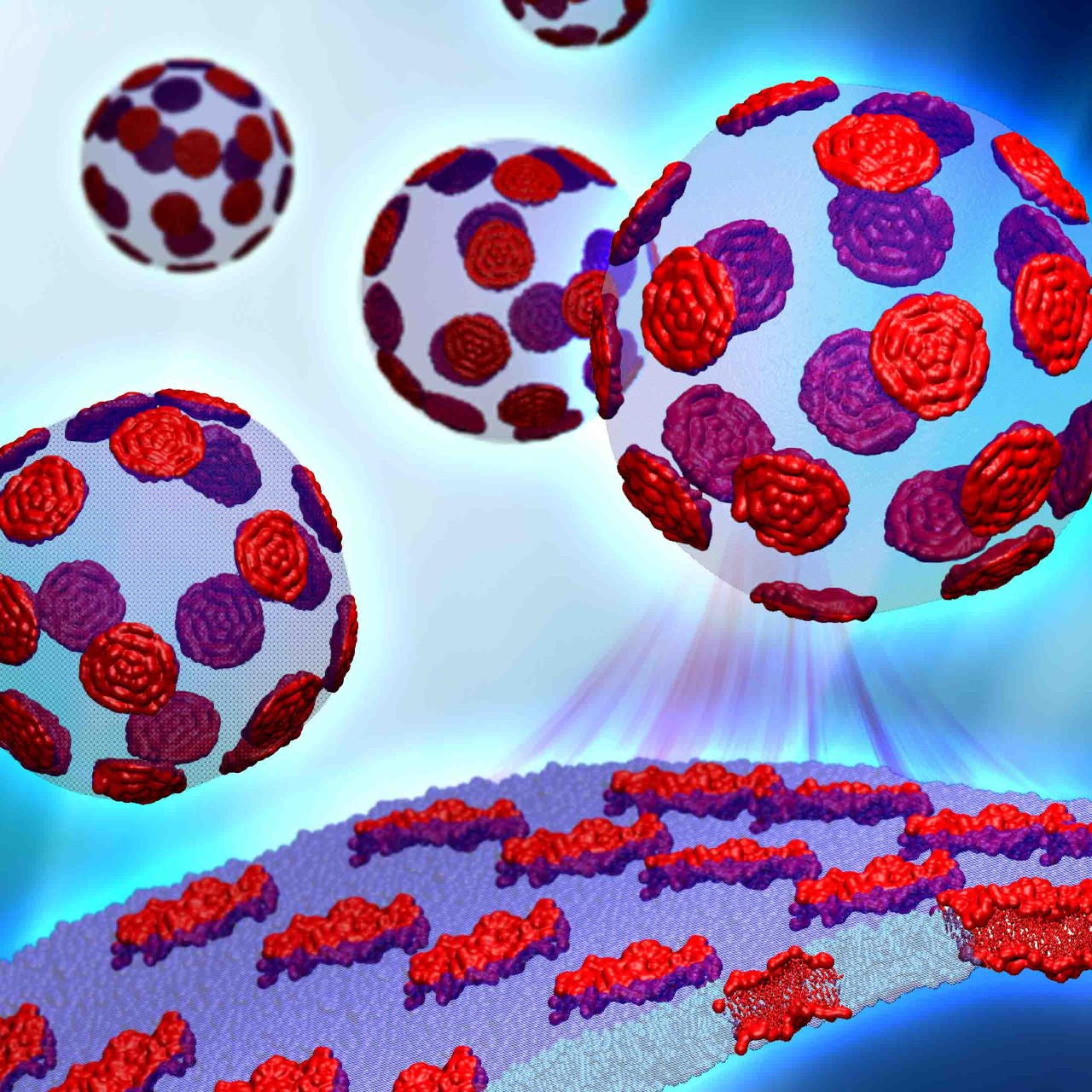
UC professor organizes the roles of cell membranes

UC assistant professor Jonathan Nickels recently published work suggesting that lipid rafts can play a role in buffering the physical properties of cell membranes.
Cells have to be resilient to stay alive. A researcher at the University of Cincinnati is studying how one part of the cell membrane can help with this survival.
UC assistant professor Jonathan Nickels and an international team of collaborators recently published a paper supporting their hypothesis that lipid rafts, small patches of lipids and proteins within cell membranes, can help maintain a membrane’s structure against changes in the environment. The work appeared as the cover story in the Journal of Physical Chemistry.
Nickels’ research in cell membranes reflects the innovation agenda platform of UC’s strategic direction, Next Lives Here.
Traditionally, people are taught that cell membranes are a lipid bilayer with a random mixture of proteins, Nickels said. Many scientists, however, now believe that proteins within cell membranes actually organize with the help of platforms called lipid rafts.
Proteins cluster together on these rafts, which allow the proteins to find their binding partners faster. When that happens, the proteins can carry out the cell membrane’s functions better, like transmitting signals to and from the cell.
But that’s not all these rafts do, according to Nickels.
“We suggest that these lipid rafts can play a role in buffering the physical properties of the membrane,” Nickels said. “This buffering is potentially advantageous for a cell in a rapidly changing environment.”
Nickels and coworkers ran experiments on a model of a cell membrane that tested the model against environmental changes, like temperature. The results showed that lipid rafts could maintain the cell membrane’s physical properties, like thickness, fluidity and flexiblity, within a change of 15 degrees Celsius.
These results show that lipid rafts, a relatively new idea in biological science, may actually be inherent to the cell’s survival. Nickels’ research can provide more answers on the workings of cells and, in turn, the broader workings of the living world.
Featured image at top: Small patches of lipids and proteins within cell membranes, called lipid rafts, can help maintain a membrane’s structure against changes in the environment. Image/ORNL/Genevieve Martin, with acknowledgment to Barmak Mostofian for original renderings.
Next Lives Here
Research into cell membranes can provide answers on the workings of the living world. UC is continues to drive innovation forward through its strategic direction, Next Lives Here.
Related Stories
Study finds police officers face higher long-term health risks
January 2, 2026
J.C. Barnes, a University of Cincinnati professor, is interviewed by Spectrum News about new research showing that the physical and psychological demands of law enforcement can contribute to earlier deaths.
UC student breaks world record in competitive speedcubing
December 19, 2025
UC computer science student Sujan Feist set a new world record in speedcubing at competition this month in Coshocton, Ohio. Feist is the reigning world champion in the 2x2 division.
Bazinga! UC physicist cracks ‘Big Bang Theory’ problem
December 19, 2025
A physicist at the University of Cincinnati and his colleagues figured out something two of America’s most famous fictional physicists couldn’t: theoretically how to produce subatomic particles called axions in fusion reactors.
